
Ready to cut your cloud costs in half?

Attend a Live Product Tour to see Sedai in action.
Register now

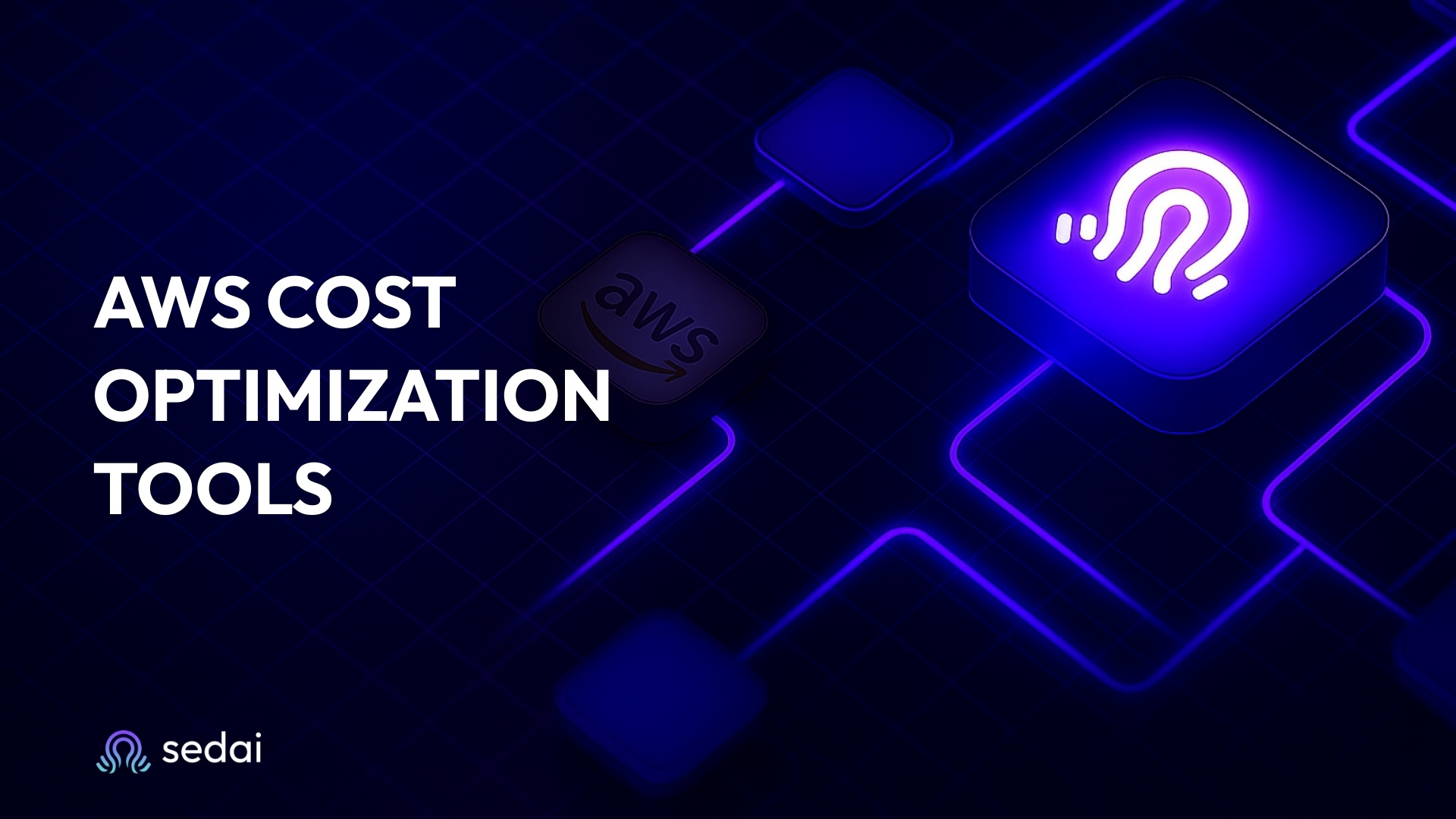
October 3, 2025
September 30, 2025
October 3, 2025
September 30, 2025

AWS cost optimization tools are critical for managing rising cloud expenses. These tools help engineering teams monitor usage, identify inefficiencies, and make informed decisions to minimize waste. AWS native tools offer basic cost visibility and recommendations, but they often require manual intervention and lack automation. As cloud environments become more complex, traditional tools no longer suffice. This highlights the growing need for third-party tools that offer automation, real-time optimizations, and deeper insights, allowing teams to manage costs and align cloud spend with business goals proactively.
Engineering leaders know how quickly AWS bills can spiral. The problem isn’t a lack of discipline but the reality of how AWS is structured. AWS, one of Amazon’s strongest revenue drivers, generating $115 billion in 2024, dominates the global cloud infrastructure market with a 30% share. Yet, despite its growth, 33% of AWS cloud spend is wasted on overprovisioned and idle resources, a gap that costs U.S. enterprises billions each year.
The rise of AI-first infrastructure has only raised the stakes. Workloads are more dynamic, experiments run hotter, and the margin for inefficiency gets thinner by the day. Old cost strategies are buckling under this new demand. It’s no wonder that 63% of organizations have made cloud cost control their top priority for 2025.
That is why AWS cost optimization tools are becoming increasingly important as cloud environments grow. But most tools stop at pointing out inefficiencies and push the hard work back on engineers. The result is a “FinOps tax”: more reports, more manual tuning, and little relief for teams who already spend on constant oversight of their infrastructure..
This is why we’ve created this guide. This blog will cover the top AWS cost optimization tools in 2025, showing where each one fits and why the shift toward autonomous systems is becoming critical for teams that want to balance efficiency with innovation.
Cost optimization is not about cutting resources blindly. It is about aligning spend with business value. In other words, the goal is to deliver the right performance at the lowest possible cost. McKinsey notes that companies combining cloud adoption with business transformation achieve up to 180% return on investment. To reach these outcomes, engineering teams must optimize compute, storage, networking, and licensing. The challenge is continuous because workloads, pricing models, and business requirements evolve.
AWS cost optimization refers to the practice of reducing AWS cloud spending without compromising on performance. It’s about aligning cloud resources with business objectives, ensuring that the resources you are paying for are being fully utilized.
Every engineering leader has felt the sting of an AWS bill that ballooned faster than anyone predicted. It is rarely the result of a single bad decision. More often, it is the steady drip of small inefficiencies that add up to millions.
A FinOps in Focus 2025 report reveals that most developers lack access to real‑time data on idle resources; they need 31 days on average to identify and eliminate waste. Meanwhile, 71% do not orchestrate Spot instances, 61% do not rightsize, 58% do not use Reserved Instances, and 48% do not shut down idle resources.
Without automation and shared accountability, even small inefficiencies accumulate. Another study by the FinOps Foundation highlights that workload optimization and waste reduction are the top priorities for practitioners. These findings highlight the need for better tools and processes.
When we look at AWS cloud infrastructure, one of the most valuable assets is data, data on how resources are utilized, when costs spike, and where savings can be made. AWS cost optimization tools are essentially the means to extract and make sense of that data, turning raw information into actionable insights.
These tools range from basic services provided directly by AWS (native tools) to more advanced, feature-rich third-party solutions. They help engineering leaders visualize cloud spend, track resource utilization, and automate the optimization process without sacrificing performance.
Both categories have their place. Visibility tools help teams understand their cost drivers and build accountability across finance and engineering. Action-oriented tools help ensure that optimization actually happens, continuously, not just once a quarter when someone finally has time to review the bill.
In 2025, the market offers a spectrum of options across these two categories. Some are AWS-native, others are third-party platforms with specialized capabilities. The common thread is that the best tools align cloud spend with business value while reducing the operational burden on engineering teams.
AWS provides several built‑in services that help visualize and control spending. These tools are foundational. They offer data and recommendations, but typically require manual follow‑through. Below is a summary of the main native options.
One of the first questions we hear from engineering teams is simple: when do native AWS tools stop being enough?
Native tools are the baseline. They give you visibility into where money is going and surface broad recommendations, but they stop short of taking real action. They also tend to look backward: limited historical data, AWS-only scope, and manual follow-through. For a single account or a relatively static workload, that might be fine. For dynamic, multi-team environments, the cracks show quickly.
This is where third-party platforms step in. They’re built to address the day-to-day realities engineering leaders face: spend spread across dozens of accounts, commitments that are hard to manage, and workloads that shift faster than human operators can adjust. The best of these platforms don’t just highlight waste; they tie into engineering workflows, surface richer analytics, and in some cases, apply automation to continuously rightsize and manage resources.
And that’s the real inflection point. Native tools tell you what happened yesterday, while third-party platforms help you stay ahead of tomorrow. For teams pushing multi-cloud strategies or scaling aggressively on AWS, the difference between the two is not just convenience. It’s the difference between always reacting to bills and actively keeping costs aligned with business goals.
Choosing the right tool is often the difference between saving a few percentage points off your AWS bill and fundamentally changing how your organization manages cloud spend.
AWS’s built-in tools can get you part of the way: budgets, dashboards, and usage reports are table stakes now, but most engineering leaders quickly realize that surface-level visibility isn’t enough.
Most vendors will tell you their tool “allocates costs,” “tracks anomalies,” and “optimizes usage.” That’s fine, but dashboards don’t save money. Actions do. That’s why the best AWS cost optimization platforms in 2025 don’t just analyze. They execute. They act safely, autonomously, and in real time.
With that in mind, here are the top 10 AWS cost optimization tools worth your attention this year. Let’s start with the one that actually lives up to that promise.

Let’s get the obvious out of the way: we put ourselves at the top of this list. Not because we enjoy self-congratulation, but because engineering leaders keep telling us that what we’re building actually solves the problem they’ve been wrestling with for years.
Engineering teams are caught in a constant struggle to manage cloud costs while maintaining system reliability. Traditional tools lack the context and ability to act on those insights. This leaves engineering teams scrambling to act on those insights manually.
Sedai takes a different path. Instead of waiting for engineers to react, it acts autonomously:
Sedai supports both autonomous scaling and co-pilot-based executions, where users are empowered to make key decisions on which workloads to execute, while the system handles other scaling actions automatically. This real-time intelligence is what sets Sedai apart.
Key Capabilities and Results
Best for: Enterprises managing large-scale, multi-cloud environments that need real-time optimization without constant manual adjustments and engineering teams who want to reduce cloud costs without adding more manual tasks to their plate.

CloudHealth by VMware is a powerful cloud management platform used by organizations worldwide to optimize their AWS costs. This tool provides detailed insights into cloud usage, allowing businesses to improve their cloud resource management and minimize unnecessary spending. CloudHealth offers cost visibility, governance tools, and optimization features to help engineering leaders maximize their cloud investments and maintain tight control over cloud expenditure.
Key Features:
Best for: Enterprises with complex, multi-cloud environments that need centralized cost management, security oversight, and compliance monitoring. Ideal for organizations requiring a comprehensive approach to both cost and governance across different cloud platforms.
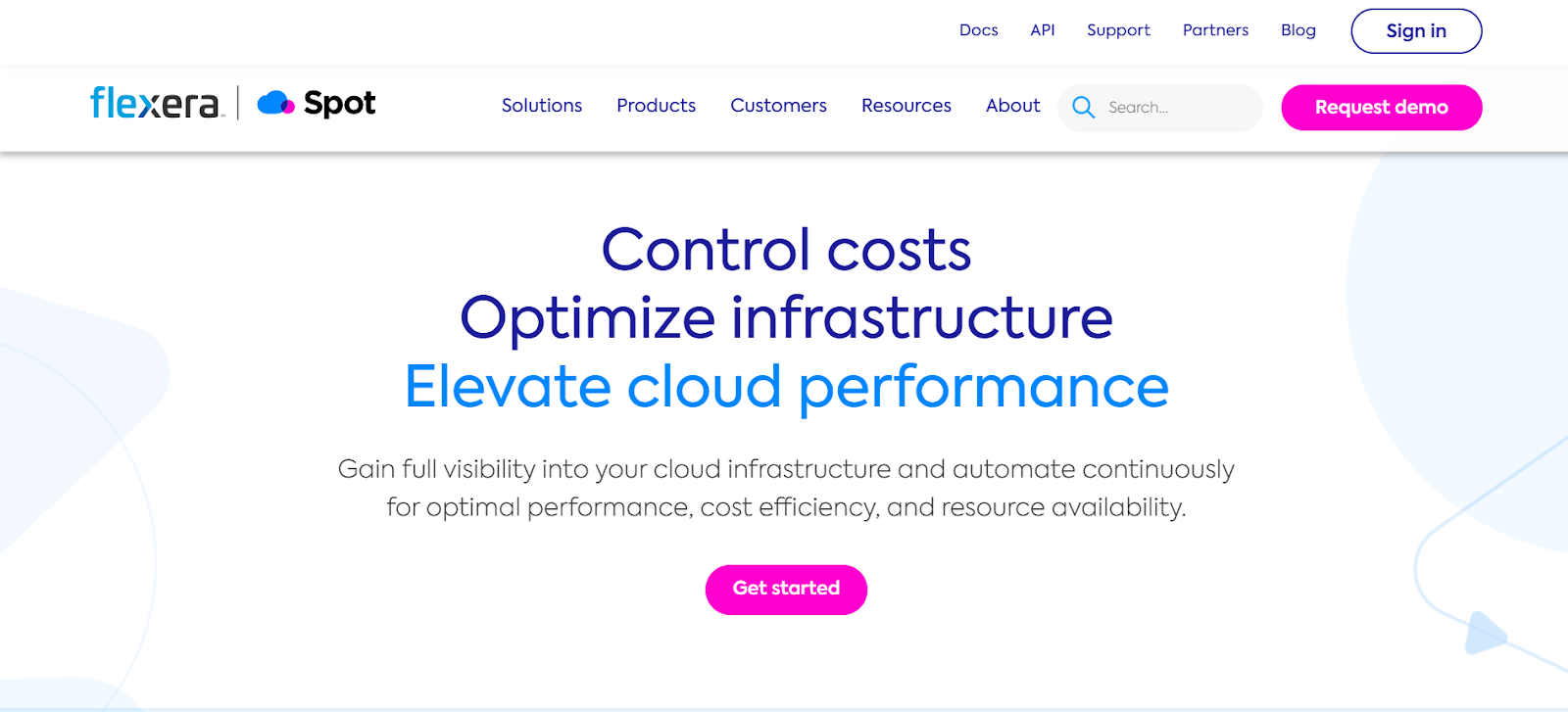
Spot by NetApp is a cloud cost management solution that focuses on optimizing cloud infrastructure to help organizations reduce their AWS costs. With its powerful data-driven approach, Spot leverages cloud automation to continuously optimize cloud infrastructure for cost savings. It is particularly effective in environments with flexible workloads, providing savings of up to 90% on EC2 costs.
Key Features:
Best for: Organizations looking to maximize savings on variable, fault-tolerant workloads. It is ideal for businesses that heavily utilize EC2 instances and want to take advantage of Spot Instances to significantly reduce their AWS bills.
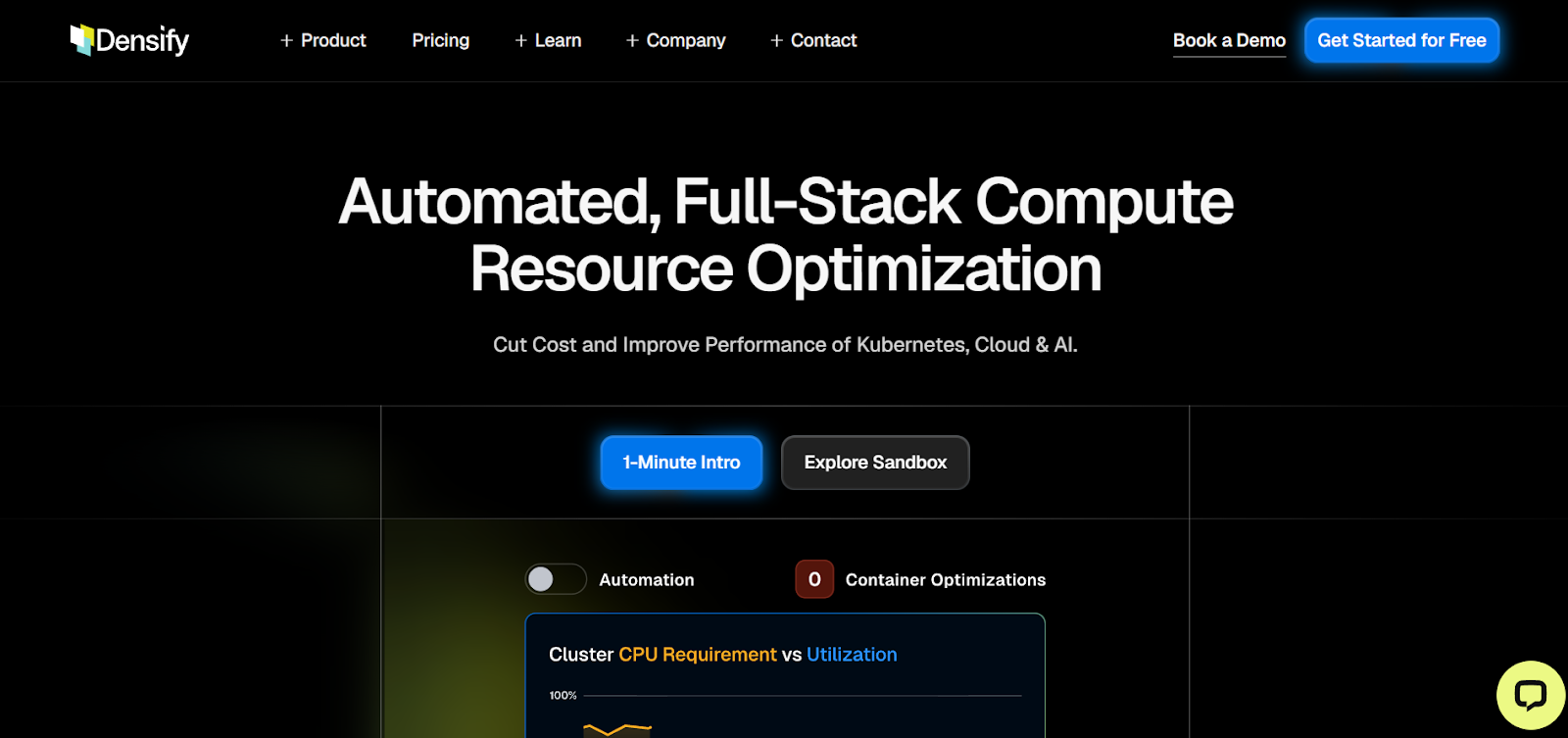
Densify is a cloud optimization platform that uses machine learning to analyze cloud resource utilization and make recommendations for cost-saving improvements. It focuses on rightsizing both traditional and containerized workloads to help organizations maximize efficiency and minimize cloud waste. Densify is an excellent choice for complex environments with hybrid or multi-cloud infrastructures.
Key Features:
Best for: Enterprises and organizations with hybrid or multi-cloud environments that need automated, intelligent cost optimization across a variety of platforms. It’s particularly useful for teams working with containers and Kubernetes.
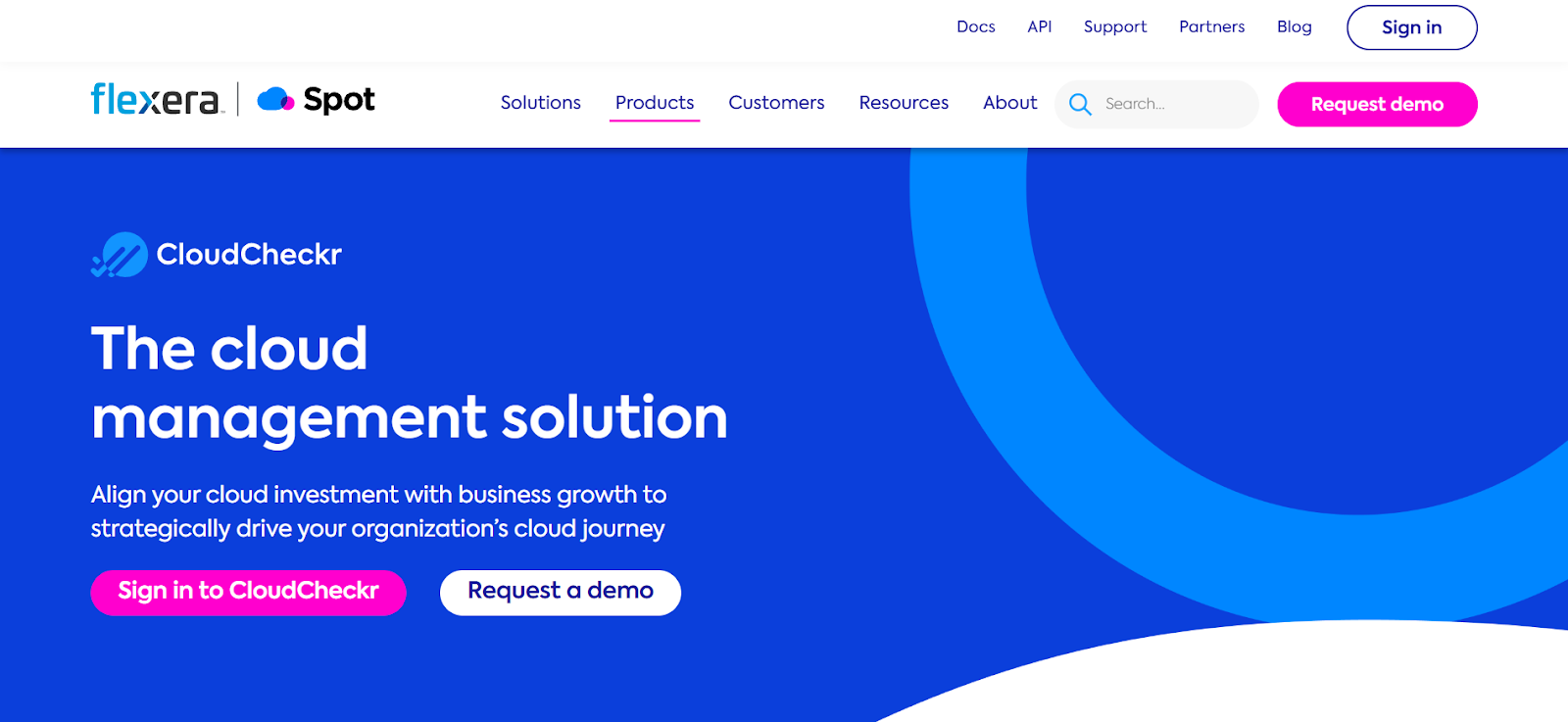
CloudCheckr is a comprehensive cloud management and optimization tool that provides deep insights into cloud usage, costs, and security. It is specifically designed to help organizations manage and optimize their AWS, Azure, and GCP resources. CloudCheckr offers an easy-to-use platform that helps teams gain visibility into their cloud spend while ensuring compliance and security standards are met.
Key Features:
Best for: Organizations that require strong security and compliance capabilities alongside comprehensive cost optimization.
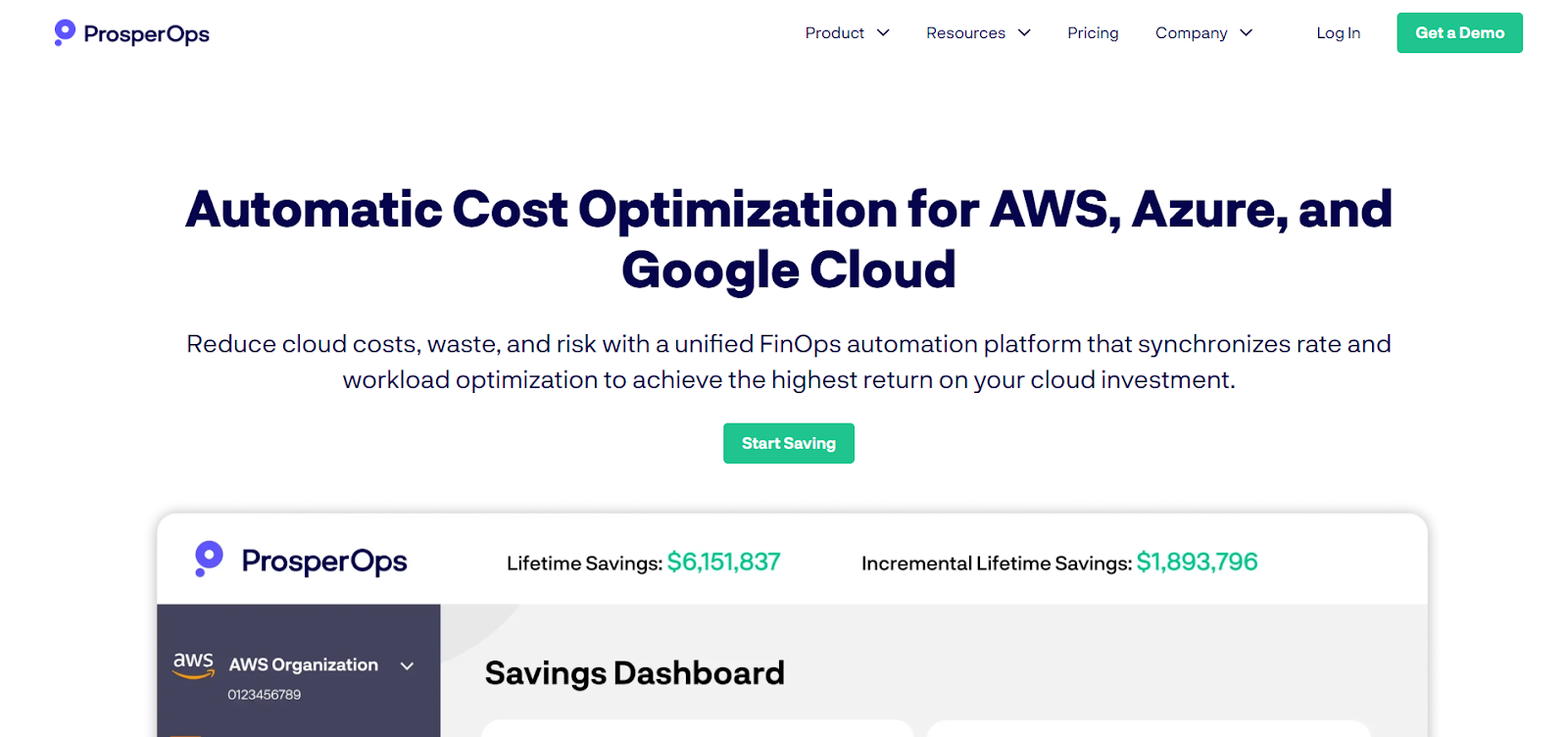
ProsperOps is an automated FinOps platform that focuses on optimizing Reserved Instances (RIs) and Savings Plans for AWS workloads. With ProsperOps, engineering teams can optimize cloud costs without manual intervention, ensuring that companies always leverage the best discount plans based on their cloud usage. The tool uses advanced algorithms to continuously optimize RI portfolios, ensuring maximum savings without compromising performance.
Key Features:
Best for: Organizations with complex, fluctuating AWS usage that want a fully automated solution to maximize the value of Reserved Instances and Savings Plans without requiring dedicated FinOps expertise.
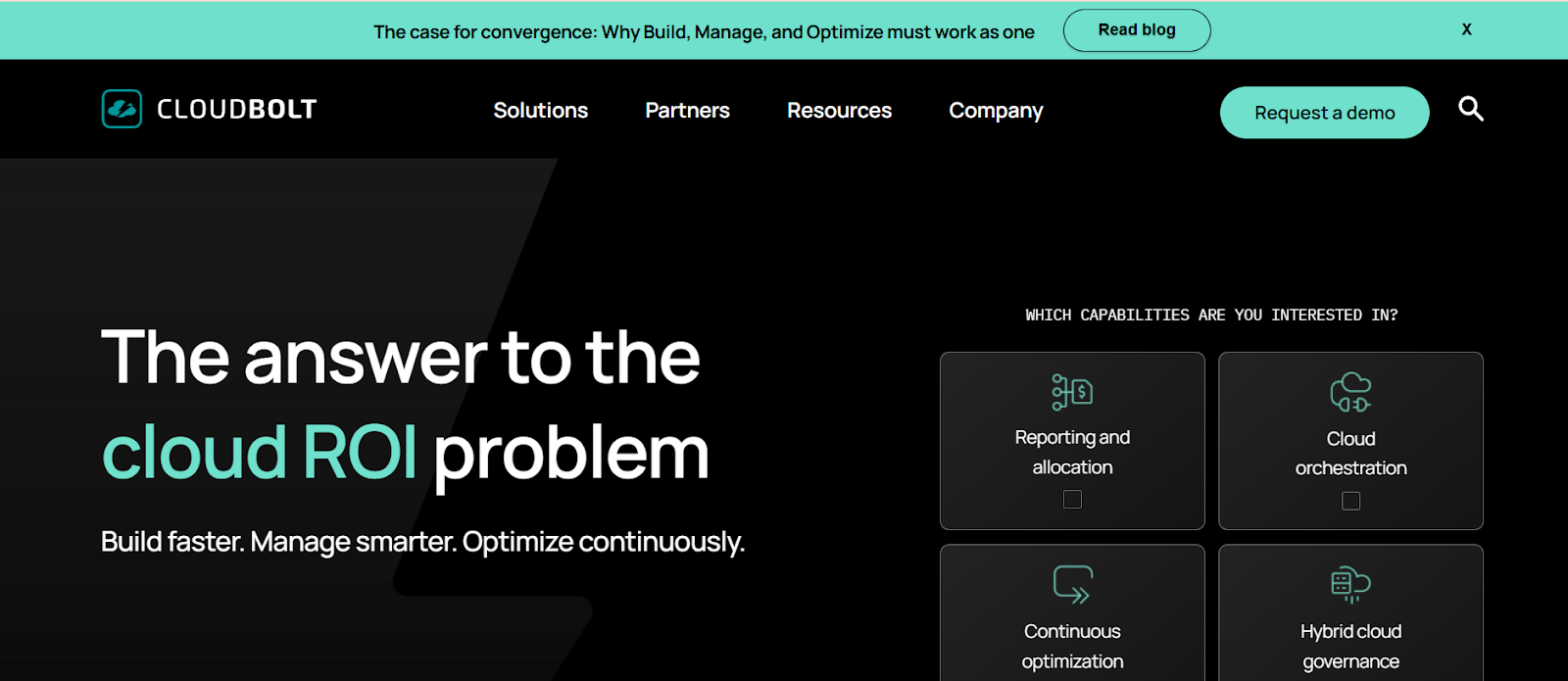
CloudBolt is a multi-cloud cost management platform that provides visibility and control over AWS, Azure, GCP, and other cloud environments. It offers robust governance and optimization capabilities, enabling organizations to identify waste, control costs, and optimize resource usage across all their cloud platforms. CloudBolt allows for seamless cost allocation, budgeting, and governance to ensure that cloud spending stays under control.
Key Features:
Best for: Enterprises managing multi-cloud environments that need centralized governance, cost forecasting, and automated optimization to keep spending in check across multiple cloud providers.
September 30, 2025
October 3, 2025

AWS cost optimization tools are critical for managing rising cloud expenses. These tools help engineering teams monitor usage, identify inefficiencies, and make informed decisions to minimize waste. AWS native tools offer basic cost visibility and recommendations, but they often require manual intervention and lack automation. As cloud environments become more complex, traditional tools no longer suffice. This highlights the growing need for third-party tools that offer automation, real-time optimizations, and deeper insights, allowing teams to manage costs and align cloud spend with business goals proactively.
Engineering leaders know how quickly AWS bills can spiral. The problem isn’t a lack of discipline but the reality of how AWS is structured. AWS, one of Amazon’s strongest revenue drivers, generating $115 billion in 2024, dominates the global cloud infrastructure market with a 30% share. Yet, despite its growth, 33% of AWS cloud spend is wasted on overprovisioned and idle resources, a gap that costs U.S. enterprises billions each year.
The rise of AI-first infrastructure has only raised the stakes. Workloads are more dynamic, experiments run hotter, and the margin for inefficiency gets thinner by the day. Old cost strategies are buckling under this new demand. It’s no wonder that 63% of organizations have made cloud cost control their top priority for 2025.
That is why AWS cost optimization tools are becoming increasingly important as cloud environments grow. But most tools stop at pointing out inefficiencies and push the hard work back on engineers. The result is a “FinOps tax”: more reports, more manual tuning, and little relief for teams who already spend on constant oversight of their infrastructure..
This is why we’ve created this guide. This blog will cover the top AWS cost optimization tools in 2025, showing where each one fits and why the shift toward autonomous systems is becoming critical for teams that want to balance efficiency with innovation.
Cost optimization is not about cutting resources blindly. It is about aligning spend with business value. In other words, the goal is to deliver the right performance at the lowest possible cost. McKinsey notes that companies combining cloud adoption with business transformation achieve up to 180% return on investment. To reach these outcomes, engineering teams must optimize compute, storage, networking, and licensing. The challenge is continuous because workloads, pricing models, and business requirements evolve.
AWS cost optimization refers to the practice of reducing AWS cloud spending without compromising on performance. It’s about aligning cloud resources with business objectives, ensuring that the resources you are paying for are being fully utilized.
Every engineering leader has felt the sting of an AWS bill that ballooned faster than anyone predicted. It is rarely the result of a single bad decision. More often, it is the steady drip of small inefficiencies that add up to millions.
A FinOps in Focus 2025 report reveals that most developers lack access to real‑time data on idle resources; they need 31 days on average to identify and eliminate waste. Meanwhile, 71% do not orchestrate Spot instances, 61% do not rightsize, 58% do not use Reserved Instances, and 48% do not shut down idle resources.
Without automation and shared accountability, even small inefficiencies accumulate. Another study by the FinOps Foundation highlights that workload optimization and waste reduction are the top priorities for practitioners. These findings highlight the need for better tools and processes.
When we look at AWS cloud infrastructure, one of the most valuable assets is data, data on how resources are utilized, when costs spike, and where savings can be made. AWS cost optimization tools are essentially the means to extract and make sense of that data, turning raw information into actionable insights.
These tools range from basic services provided directly by AWS (native tools) to more advanced, feature-rich third-party solutions. They help engineering leaders visualize cloud spend, track resource utilization, and automate the optimization process without sacrificing performance.
Both categories have their place. Visibility tools help teams understand their cost drivers and build accountability across finance and engineering. Action-oriented tools help ensure that optimization actually happens, continuously, not just once a quarter when someone finally has time to review the bill.
In 2025, the market offers a spectrum of options across these two categories. Some are AWS-native, others are third-party platforms with specialized capabilities. The common thread is that the best tools align cloud spend with business value while reducing the operational burden on engineering teams.
AWS provides several built‑in services that help visualize and control spending. These tools are foundational. They offer data and recommendations, but typically require manual follow‑through. Below is a summary of the main native options.
One of the first questions we hear from engineering teams is simple: when do native AWS tools stop being enough?
Native tools are the baseline. They give you visibility into where money is going and surface broad recommendations, but they stop short of taking real action. They also tend to look backward: limited historical data, AWS-only scope, and manual follow-through. For a single account or a relatively static workload, that might be fine. For dynamic, multi-team environments, the cracks show quickly.
This is where third-party platforms step in. They’re built to address the day-to-day realities engineering leaders face: spend spread across dozens of accounts, commitments that are hard to manage, and workloads that shift faster than human operators can adjust. The best of these platforms don’t just highlight waste; they tie into engineering workflows, surface richer analytics, and in some cases, apply automation to continuously rightsize and manage resources.
And that’s the real inflection point. Native tools tell you what happened yesterday, while third-party platforms help you stay ahead of tomorrow. For teams pushing multi-cloud strategies or scaling aggressively on AWS, the difference between the two is not just convenience. It’s the difference between always reacting to bills and actively keeping costs aligned with business goals.
Choosing the right tool is often the difference between saving a few percentage points off your AWS bill and fundamentally changing how your organization manages cloud spend.
AWS’s built-in tools can get you part of the way: budgets, dashboards, and usage reports are table stakes now, but most engineering leaders quickly realize that surface-level visibility isn’t enough.
Most vendors will tell you their tool “allocates costs,” “tracks anomalies,” and “optimizes usage.” That’s fine, but dashboards don’t save money. Actions do. That’s why the best AWS cost optimization platforms in 2025 don’t just analyze. They execute. They act safely, autonomously, and in real time.
With that in mind, here are the top 10 AWS cost optimization tools worth your attention this year. Let’s start with the one that actually lives up to that promise.

Let’s get the obvious out of the way: we put ourselves at the top of this list. Not because we enjoy self-congratulation, but because engineering leaders keep telling us that what we’re building actually solves the problem they’ve been wrestling with for years.
Engineering teams are caught in a constant struggle to manage cloud costs while maintaining system reliability. Traditional tools lack the context and ability to act on those insights. This leaves engineering teams scrambling to act on those insights manually.
Sedai takes a different path. Instead of waiting for engineers to react, it acts autonomously:
Sedai supports both autonomous scaling and co-pilot-based executions, where users are empowered to make key decisions on which workloads to execute, while the system handles other scaling actions automatically. This real-time intelligence is what sets Sedai apart.
Key Capabilities and Results
Best for: Enterprises managing large-scale, multi-cloud environments that need real-time optimization without constant manual adjustments and engineering teams who want to reduce cloud costs without adding more manual tasks to their plate.

CloudHealth by VMware is a powerful cloud management platform used by organizations worldwide to optimize their AWS costs. This tool provides detailed insights into cloud usage, allowing businesses to improve their cloud resource management and minimize unnecessary spending. CloudHealth offers cost visibility, governance tools, and optimization features to help engineering leaders maximize their cloud investments and maintain tight control over cloud expenditure.
Key Features:
Best for: Enterprises with complex, multi-cloud environments that need centralized cost management, security oversight, and compliance monitoring. Ideal for organizations requiring a comprehensive approach to both cost and governance across different cloud platforms.

Spot by NetApp is a cloud cost management solution that focuses on optimizing cloud infrastructure to help organizations reduce their AWS costs. With its powerful data-driven approach, Spot leverages cloud automation to continuously optimize cloud infrastructure for cost savings. It is particularly effective in environments with flexible workloads, providing savings of up to 90% on EC2 costs.
Key Features:
Best for: Organizations looking to maximize savings on variable, fault-tolerant workloads. It is ideal for businesses that heavily utilize EC2 instances and want to take advantage of Spot Instances to significantly reduce their AWS bills.

Densify is a cloud optimization platform that uses machine learning to analyze cloud resource utilization and make recommendations for cost-saving improvements. It focuses on rightsizing both traditional and containerized workloads to help organizations maximize efficiency and minimize cloud waste. Densify is an excellent choice for complex environments with hybrid or multi-cloud infrastructures.
Key Features:
Best for: Enterprises and organizations with hybrid or multi-cloud environments that need automated, intelligent cost optimization across a variety of platforms. It’s particularly useful for teams working with containers and Kubernetes.

CloudCheckr is a comprehensive cloud management and optimization tool that provides deep insights into cloud usage, costs, and security. It is specifically designed to help organizations manage and optimize their AWS, Azure, and GCP resources. CloudCheckr offers an easy-to-use platform that helps teams gain visibility into their cloud spend while ensuring compliance and security standards are met.
Key Features:
Best for: Organizations that require strong security and compliance capabilities alongside comprehensive cost optimization.

ProsperOps is an automated FinOps platform that focuses on optimizing Reserved Instances (RIs) and Savings Plans for AWS workloads. With ProsperOps, engineering teams can optimize cloud costs without manual intervention, ensuring that companies always leverage the best discount plans based on their cloud usage. The tool uses advanced algorithms to continuously optimize RI portfolios, ensuring maximum savings without compromising performance.
Key Features:
Best for: Organizations with complex, fluctuating AWS usage that want a fully automated solution to maximize the value of Reserved Instances and Savings Plans without requiring dedicated FinOps expertise.

CloudBolt is a multi-cloud cost management platform that provides visibility and control over AWS, Azure, GCP, and other cloud environments. It offers robust governance and optimization capabilities, enabling organizations to identify waste, control costs, and optimize resource usage across all their cloud platforms. CloudBolt allows for seamless cost allocation, budgeting, and governance to ensure that cloud spending stays under control.
Key Features:
Best for: Enterprises managing multi-cloud environments that need centralized governance, cost forecasting, and automated optimization to keep spending in check across multiple cloud providers.